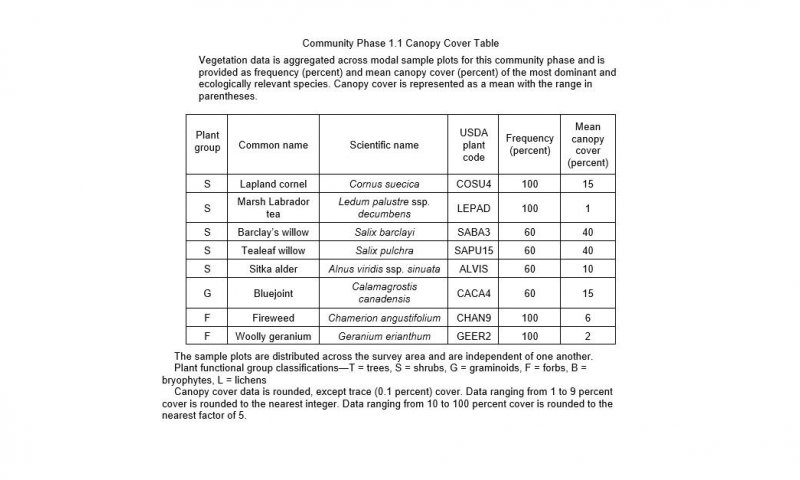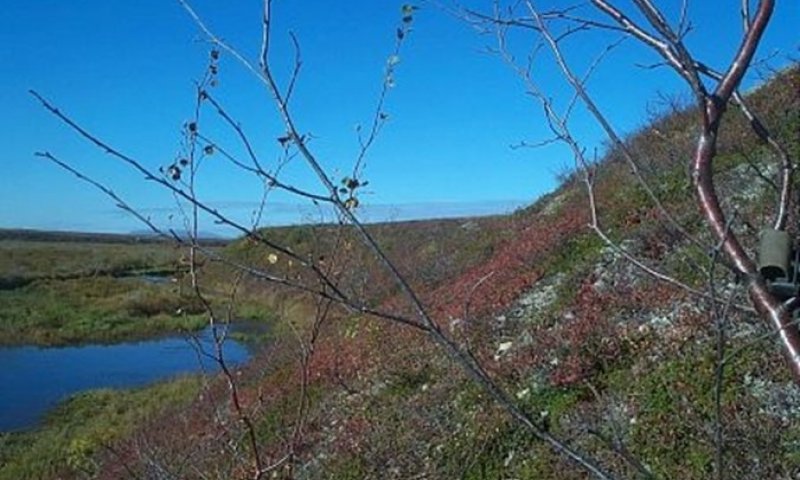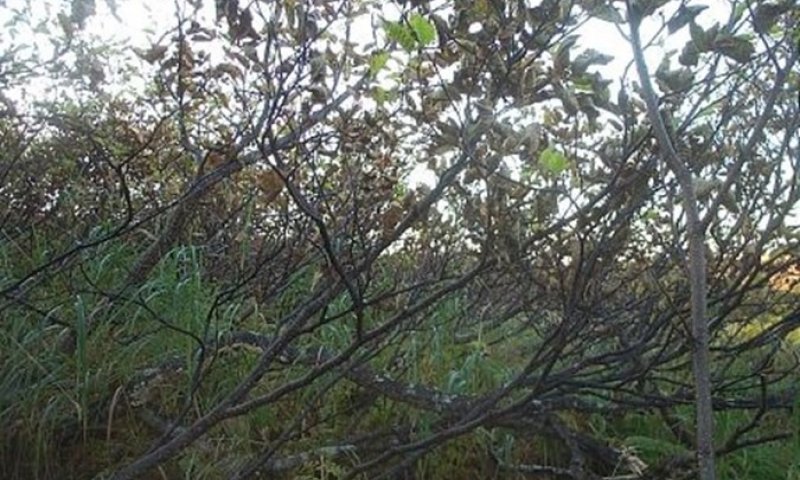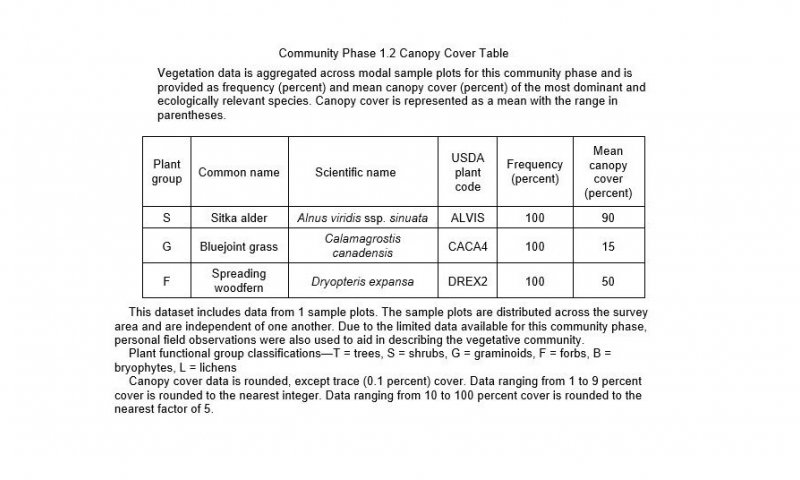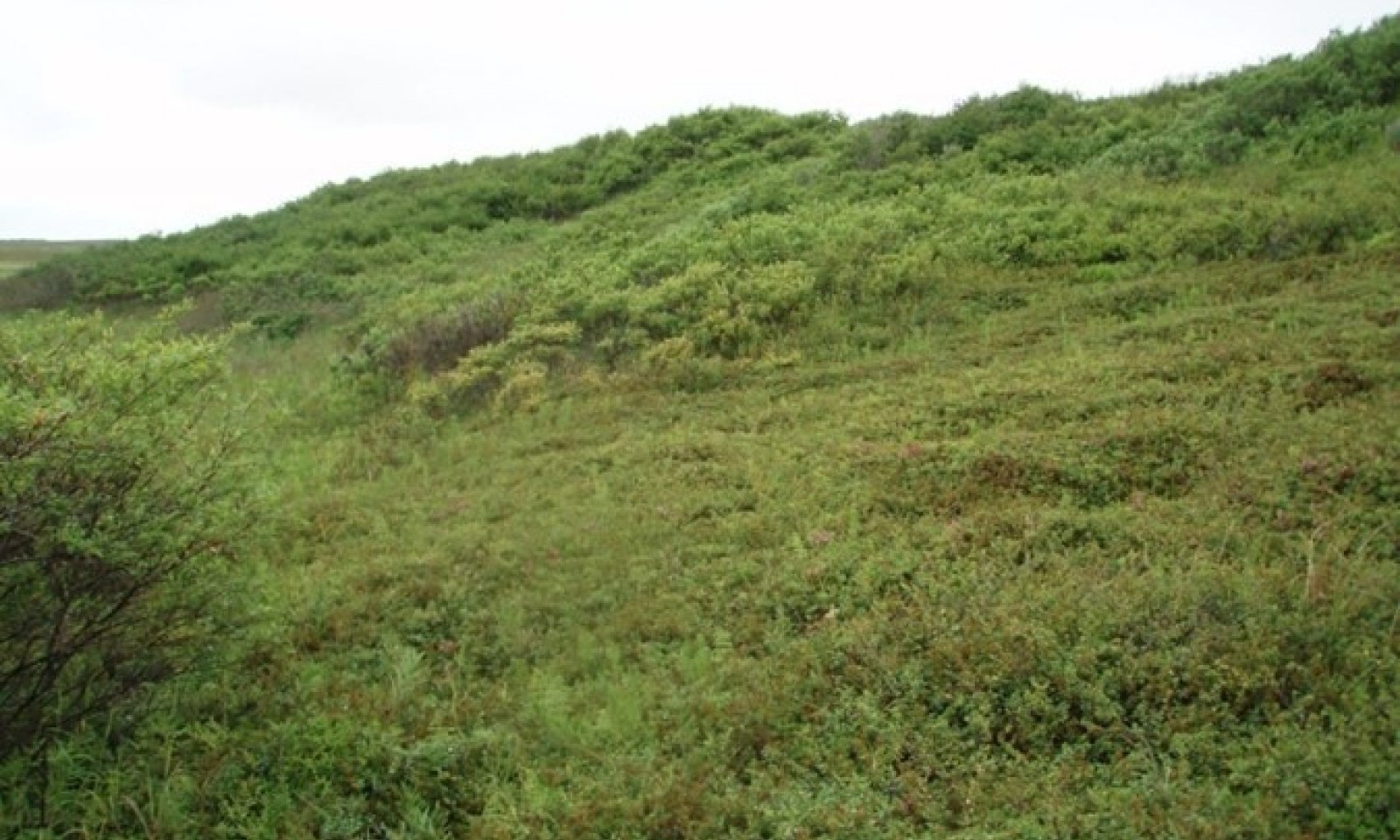

Natural Resources
Conservation Service
Ecological site R236XY174AK
Subarctic Mosaic Loamy Steep Bluffs
Last updated: 2/13/2024
Accessed: 02/27/2025
General information
Provisional. A provisional ecological site description has undergone quality control and quality assurance review. It contains a working state and transition model and enough information to identify the ecological site.
MLRA notes
Major Land Resource Area (MLRA): 236X–Bristol Bay-Northern Alaska Peninsula Lowlands
The Bristol Bay-Northern Alaska Peninsula Lowland Major Land Resource Area (MLRA 236) is located in Western Alaska. This MLRA covers approximately 19,500 square miles and is defined by an expanse of nearly level to rolling lowlands, uplands and low to moderate hills bordered by long, mountain footslopes. Major rivers include the Egegik, Mulchatna, Naknek, Nushagak, and Wood River. MLRA 236 is in the zone of discontinuous permafrost. It is primarily in areas with finer textured soils on terraces, rolling uplands and footslopes. This MLRA was glaciated during the early to middle Pleistocene. Moraine and glaciofluvial deposits cover around sixty percent of the MLRA. Alluvium and coastal deposits make up a large portion of the remaining area (Kautz et al., 2012; USDA, 2006).
Climate patterns across this MLRA shift as one moves away from the coast. A maritime climate is prominent along the coast, while continental weather, commonly associated with Interior Alaska, is more influential inland. Across the MLRA, summers are general short and warm while winters are long and cold. Mean annual precipitation is 13 to 50 inches, with increased precipitation at higher elevations and areas away from the coast. Mean annual temperatures is between 30 and 36 degrees F (USDA, 2006).
The Bristol Bay-Northern Alaska Peninsula MLRA is principally undeveloped wilderness. Federally managed land includes parts of the Katmai and Aniakchak National Parks, and the Alaska Peninsula, Becharof, Togiak and Alaska Maritime National Wildlife Refuges. The MLRA is sparsely populated. Principal communities include Dillingham, Naknek, and King Salmon. Commercial fishing in Bristol Bay and the Bering Sea comprises a major part of economic activity in the MLRA. Other land uses include subsistence activities (fishing, hunting, and gathering) and sport hunting and fishing (USDA, 2006).
Classification relationships
Alaska Vegetation Classification:
Open tall scrubland (II.B.2 - level III) / Open willow scrubland (II.B.2.a - level IV)
(Viereck et al., 1992)
Ecological site concept
This ecological site is on linear bluffs of drainageways and narrow river valleys. Site elevation is between 170 and 550 feet above sea level. Slope gradients are strong to very steep (11 – 85 percent). Soil hydrology, low soil acidity, and a fire regime shape the vegetation on this site. Slope gradient and related erosion, along with a year-round water table, shape the vegetative community on this site. Aquic conditions restrict vegetation to facultative to obligate wet wetland species. Acidic conditions, common to the Spodosols found here, have a relatively low natural fertility, further restricting vegetation
The reference state supports two communities. The reference plant community is characterized as an open willow scrubland (Viereck et al., 1992). It is composed of one or more willow species with understory and open areas host to dense low scrub, forbs, and graminoids. Post-fire vegetation is typically comprised of fast growing herbaceous species with wind dispersed seeds and nitrogen-fixing shrub species such as alder.
Associated sites
| R236XY154AK |
Subarctic Ericaceous Scrub Loamy Plain Swales R236XY154AK describes concave swale features that are sometimes present between bluffs. Wetter soil and ponding disturbances in the swale support a unique representative plant community not found in R236XY174AK. |
|---|---|
| R236XY132AK |
Subarctic Dwarf Scrub Dry Loamy Slopes R236XY132AK describes shoulder positions above bluffs. These exposed, convex shoulders support a distinct dwarf shrub community. |
Similar sites
| R236XY175AK |
Subarctic Scrub Loamy Steep Coastal Bluffs Both sites describe steep bluff landforms. R236XY175AK describes coastal escarpments subject to coastal erosion, while R236XY174AK is found above rivers and drainageways. Differences in erosion and soil hydrology support unique ecological sites on these landforms. |
|---|
Table 1. Dominant plant species
| Tree |
Not specified |
|---|---|
| Shrub |
(1) Vaccinium uliginosum |
| Herbaceous |
(1) Chamerion angustifolium |
Click on box and path labels to scroll to the respective text.
Ecosystem states
State 1 submodel, plant communities
| 1.1A | - | Fire |
|---|---|---|
| 1.2A | - | Fire recovery |

